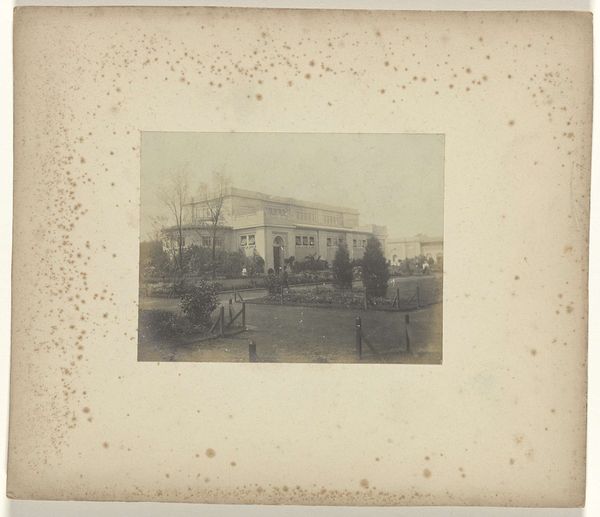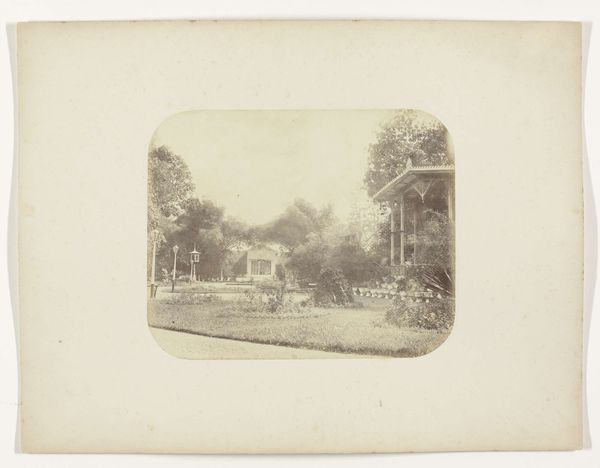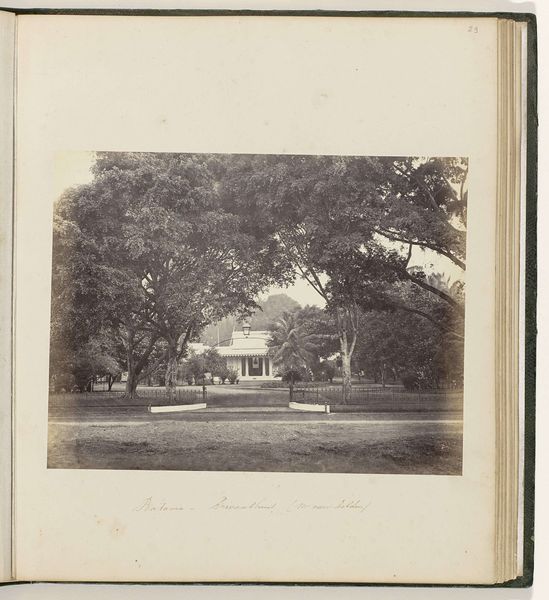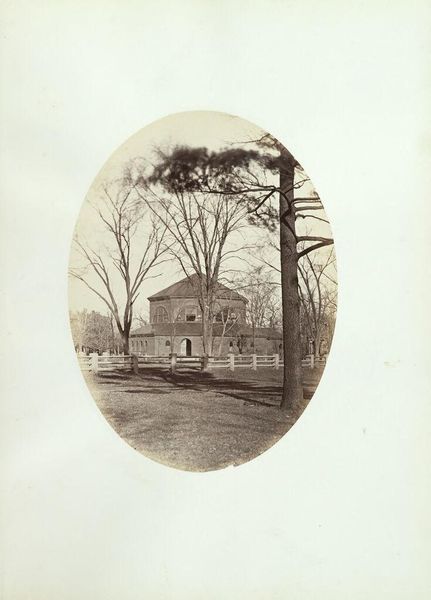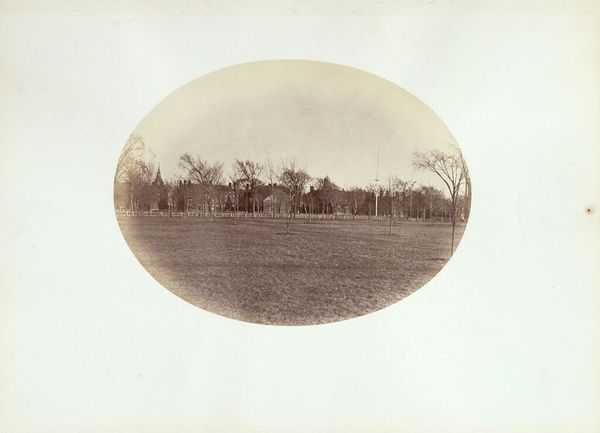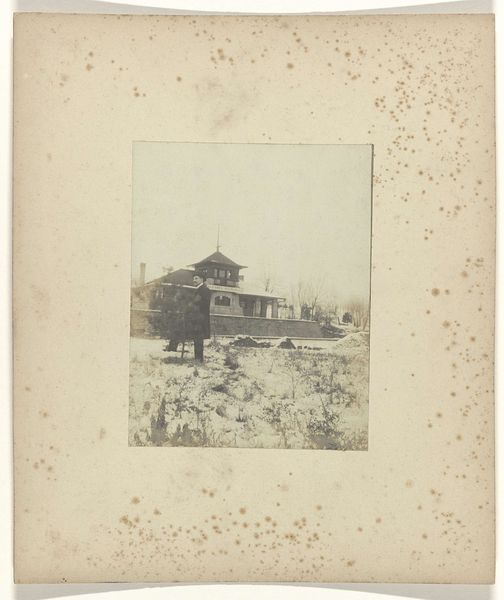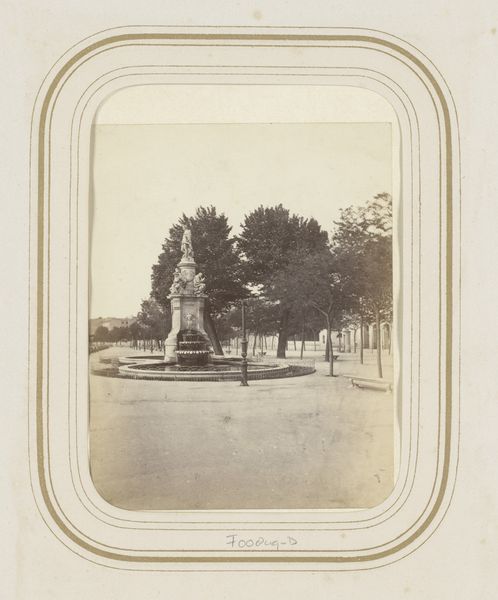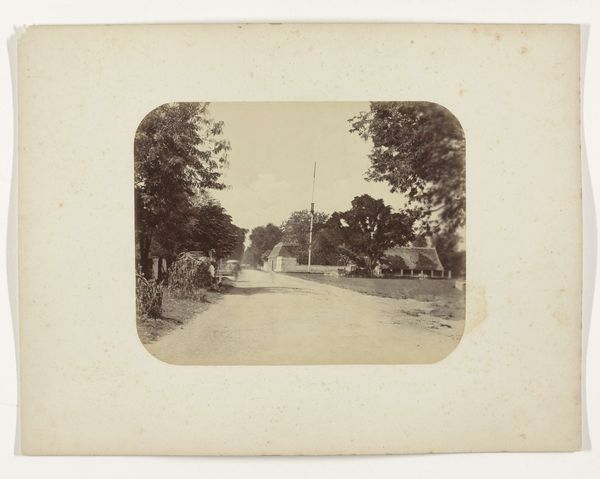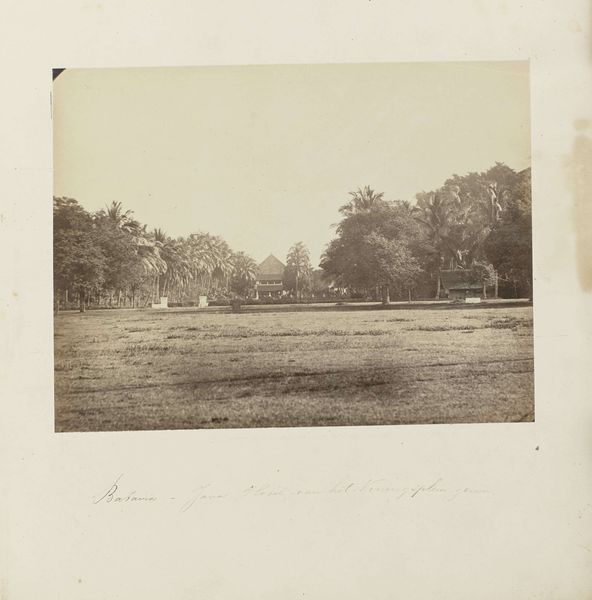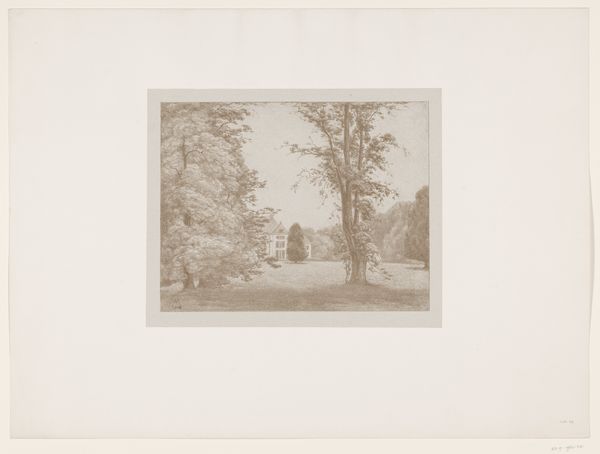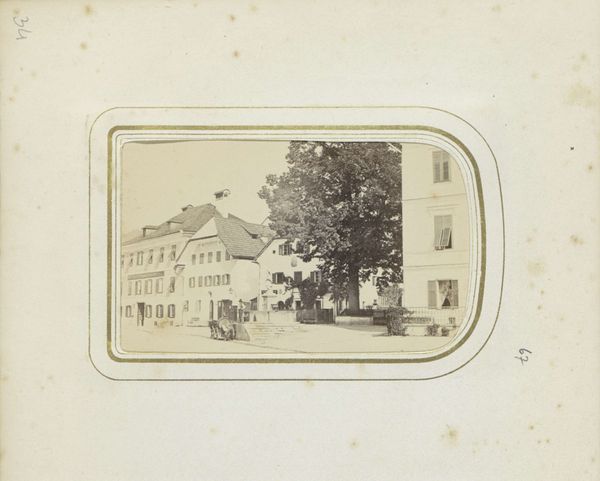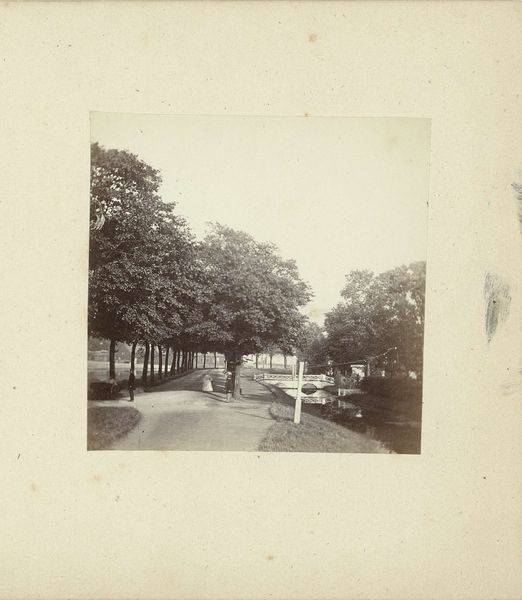
Spoorlijn achter The Art Building op de wereldtentoonstelling in St. Louis (Louisiana Purchase Exposition), 1904 1904
0:00
0:00
photography
#
pictorialism
#
landscape
#
photography
#
cityscape
Dimensions: height 101 mm, width 76 mm
Copyright: Rijks Museum: Open Domain
Editor: This is a photograph by Jan Schüller titled "Spoorlijn achter The Art Building op de wereldtentoonstelling in St. Louis (Louisiana Purchase Exposition), 1904," taken in 1904. It's quite a subdued image, with this clear railway line contrasting against a more ethereal depiction of the art building. What elements of the composition stand out to you? Curator: The stark linearity of the railway juxtaposed with the soft, almost blurred representation of the Art Building certainly captures one's attention. Notice how the converging lines of the tracks lead the eye towards the architectural form, which is itself softened by a Pictorialist aesthetic. Consider how the photograph functions on two levels: the harsh industrial versus the refined aesthetic, effectively dichotomizing progress and art. Editor: So, you see this contrast as intentional? Is the blending of harsh lines with softened images typical for that time? Curator: The interplay between sharpness and blur is typical for pictorialism, yes, and it relates to technique, whereby manipulation of focus and printing processes was used to imbue photography with painterly qualities. Yet here, Schüller uses the directness of the railway line as a deliberate counterpoint. What does this juxtaposition suggest about the relationship between industrial advancement and artistic expression during that era? Editor: I hadn’t considered that perspective, the way industrial advancement and artistic expression were combined during this time. It seems there is an emphasis on form itself, even in documentary photography. Curator: Precisely. It pushes us to analyze photography not simply as a representation of reality but as a construction of form and meaning through conscious choices. Hopefully you leave today understanding it, too. Editor: Definitely! Thank you.
Comments
No comments
Be the first to comment and join the conversation on the ultimate creative platform.
